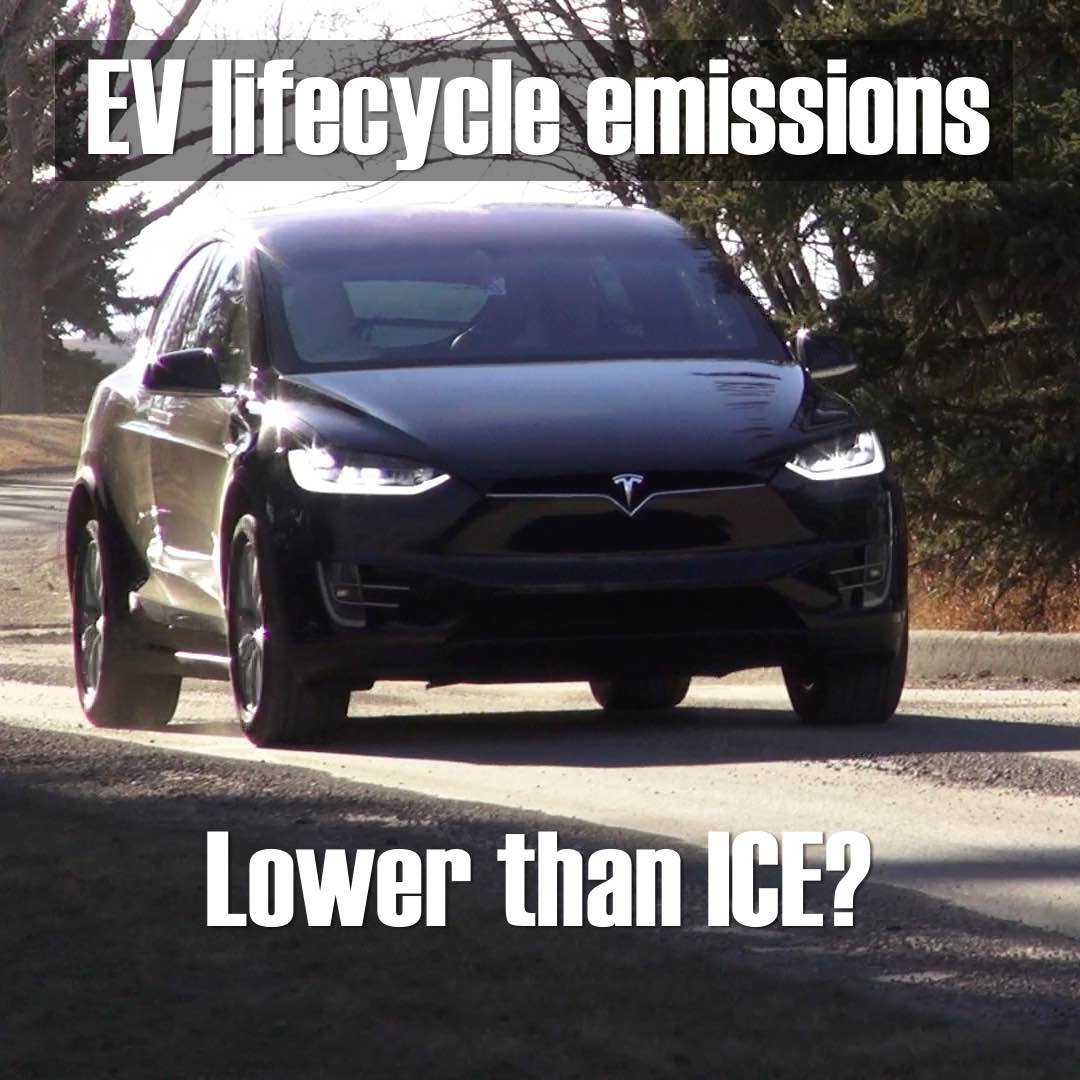By David Dodge, GreenEnergyFutures.ca
Does an electric vehicle (EV) produce fewer emissions than a gas-powered car? The answer is a resounding yes according to a report by Bloomberg New Energy Finance.
You have probably heard the refrain ‘It takes more carbon emissions to build an EV than it will ever save by driving it.’
To drill down into this question Bloomberg looked at the lifecycles of EVs in six countries: US, UK, Japan, Germany and China.
“In all of our analyzed cases, bar none, electric vehicles come out better than internal combustion engine vehicles,” says Corey Cantor senior associate for electric vehicles at Bloomberg NEF.
Bloomberg looked at how clean each country’s electricity is, and what kinds of cars they are driving both today and in the future.
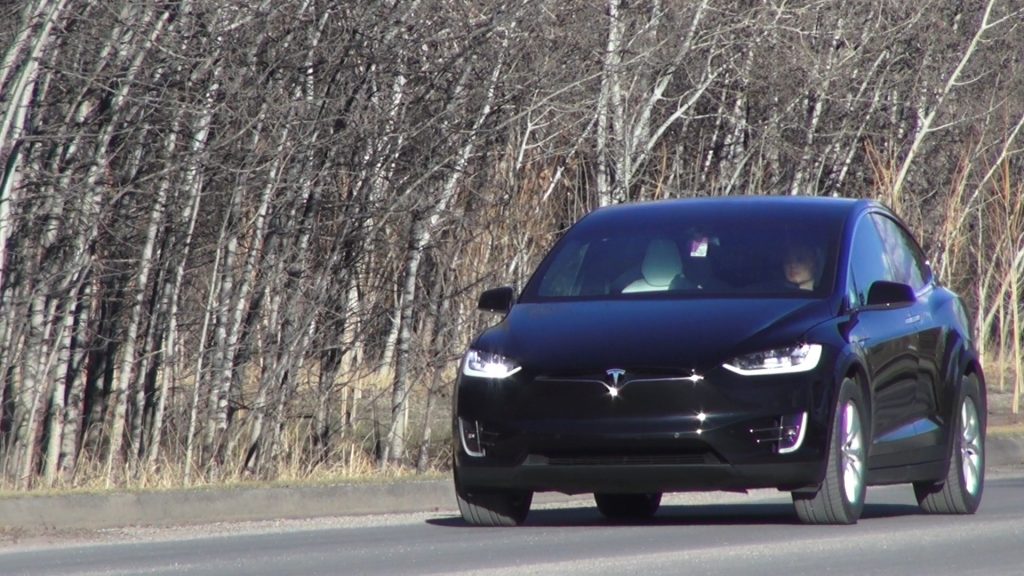
Lifecycle emissions come from manufacturing, materials and driving
The total lifecycle emissions of a car include both the emissions embodied in the production of the vehicles and the operation of the vehicles over time.
To be conservative Bloomberg assumed the emissions from manufacturing EVs and internal combustion engine vehicles are the same, even though the EV has fewer parts and components. They dealt with the battery separately.
The big difference comes from the production of the batteries for the EVs.
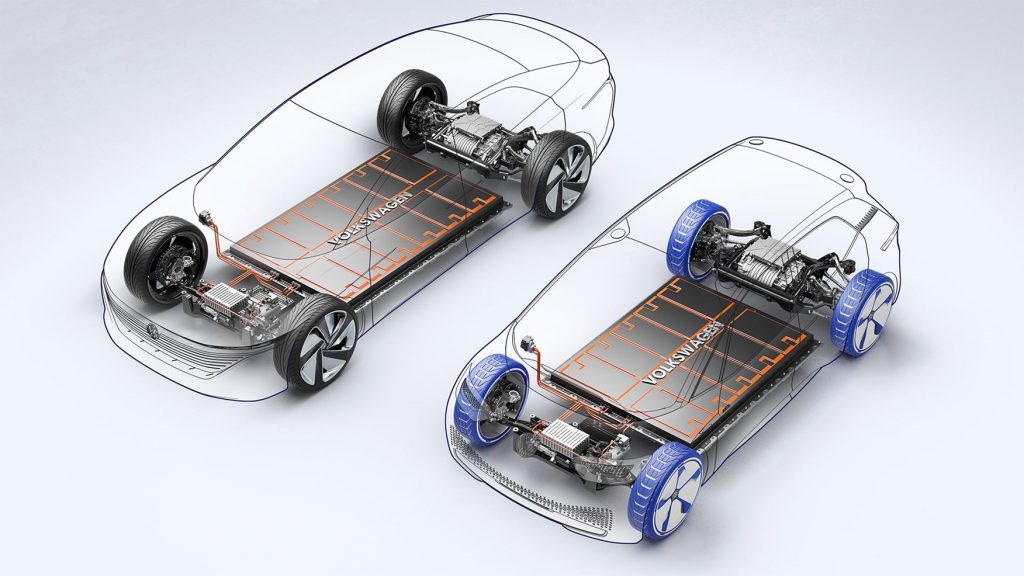
EVs start their life with higher embodied emissions from producing the batteries, but in time the efficiency of the EVs more than makes up the difference.
In the US for example Bloomberg found that the break-even point for lifecycle emissions is about two years in the US and 9.5 years in China due to their dirtier electricity grid.
It gets even better when you consider that grids are getting cleaner every year.
In just one decade the break-even point drops to just one year in the US and four years in China.
The best place to drive an EV (in countries looked at) is the UK where EV emissions are less than one-third of those for internal combustion engines. The worst place for emissions from internal combustion engines is the US (see chart).
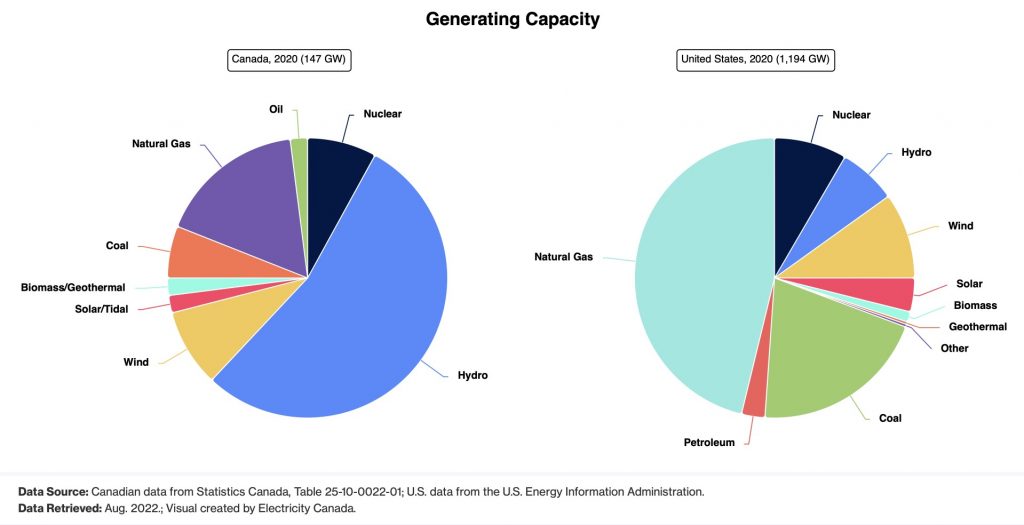
What about Canada?
Bloomberg didn’t include Canada in their study, but here are some relevant facts.
Canada’s electricity grid is twice as clean as that of the US since nationally we produce a lot of electricity from renewable energy, principally hydro. The proportion coming from wind and solar is growing every year.
Alberta is often through of as having Canada’s dirtiest electricity grid, but it turns out Alberta’s grid is about the same as the US in terms of how clean or dirty it is.
This is because Alberta has virtually eliminated coal-fired generation in less than a decade and renewables were growing fast until the provincial government slapped restrictions on the renewable energy industry in early 2024.
The story’s moral is that even in Alberta EVs produce far fewer emissions than ICE vehicles. In the UK an EV will produce one-third of the lifecycle emissions of an ICE vehicle and even in the US the EV will produce less than one-half of the emissions of an ICE.

Nuances abound
Ok, for the geeky among us, the embodied emissions from both vehicle and battery manufacturing vary considerably from country to country based on how locally the components and materials are sourced.
And people in China use smaller cars and people in Canada and the US love their F150s.
They found EVs will produce fewer lifecycle emissions in all countries.
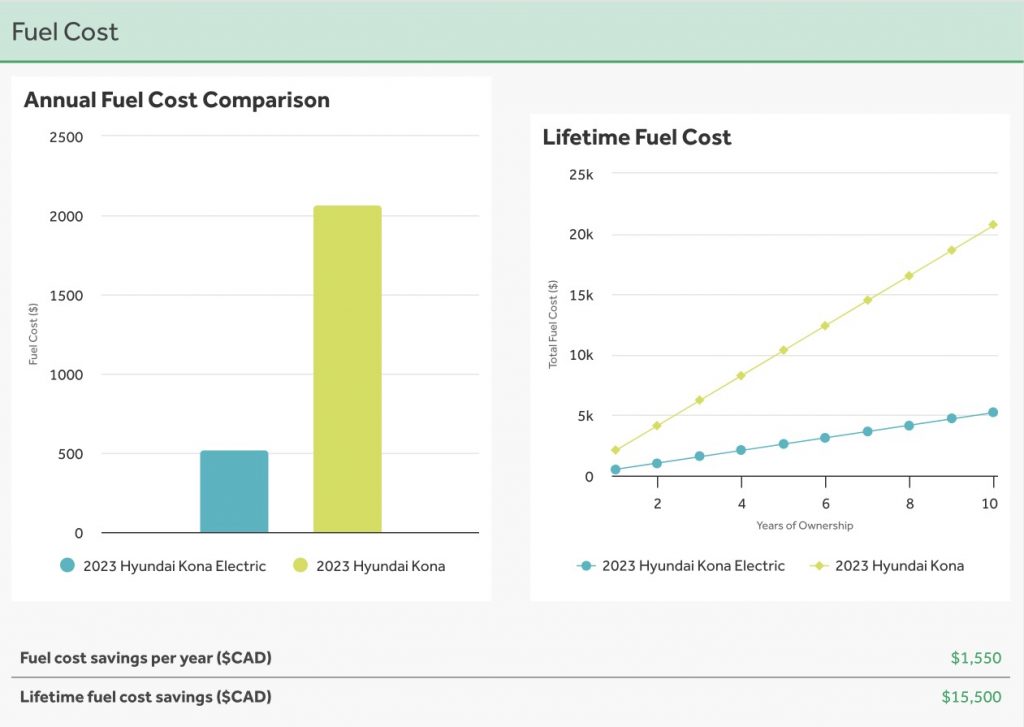
Total cost of ownership
It costs a lot less to operate an EV with some owners paying as little as 20-25% the cost of gas for ICE vehicles to fuel their EVs with electricity. But you still have to buy the more expensive EV to get in on the savings. In the Bloomberg study, they found the total cost of ownership is at or below parity with ICE vehicles and that they expect EVs to reach parity with purchase price by 2026.
The Municipal Climate Change Action Centre (MCCAC) in Alberta just launched a calculator to compare EVs with ICE vehicles. We dropped in a 2023 Kona EV and compared it to a 2023 Kona ICE and here’s what the fuel cost chart looks like.
The Electric Vehicle Association of Alberta also has a calculator if you want to play around.
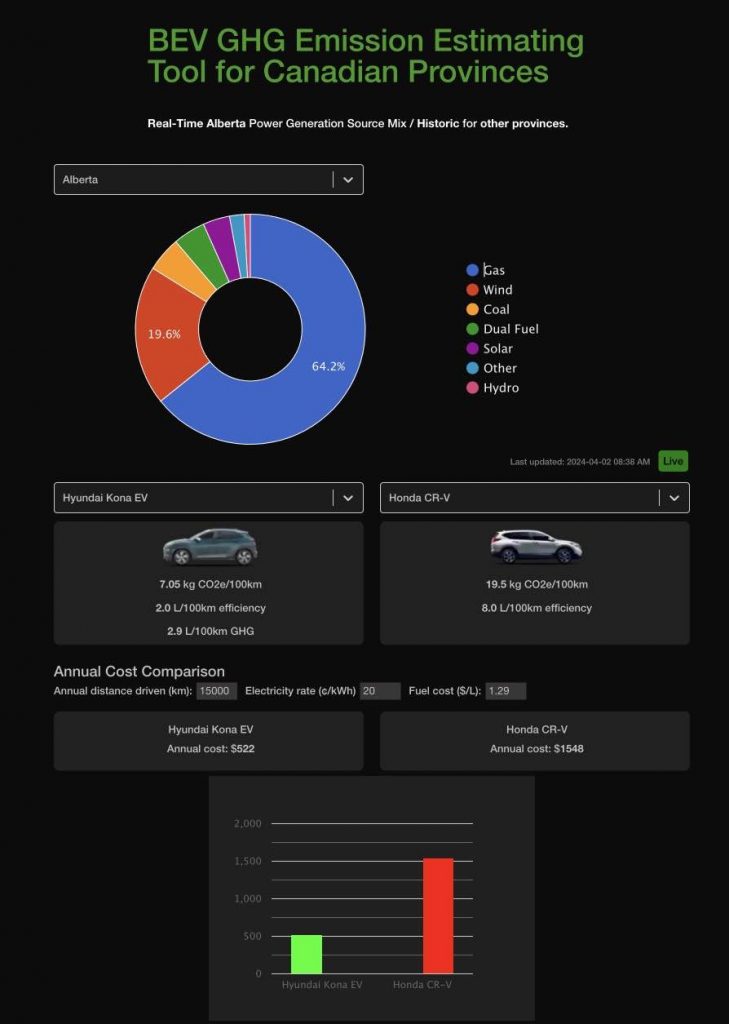
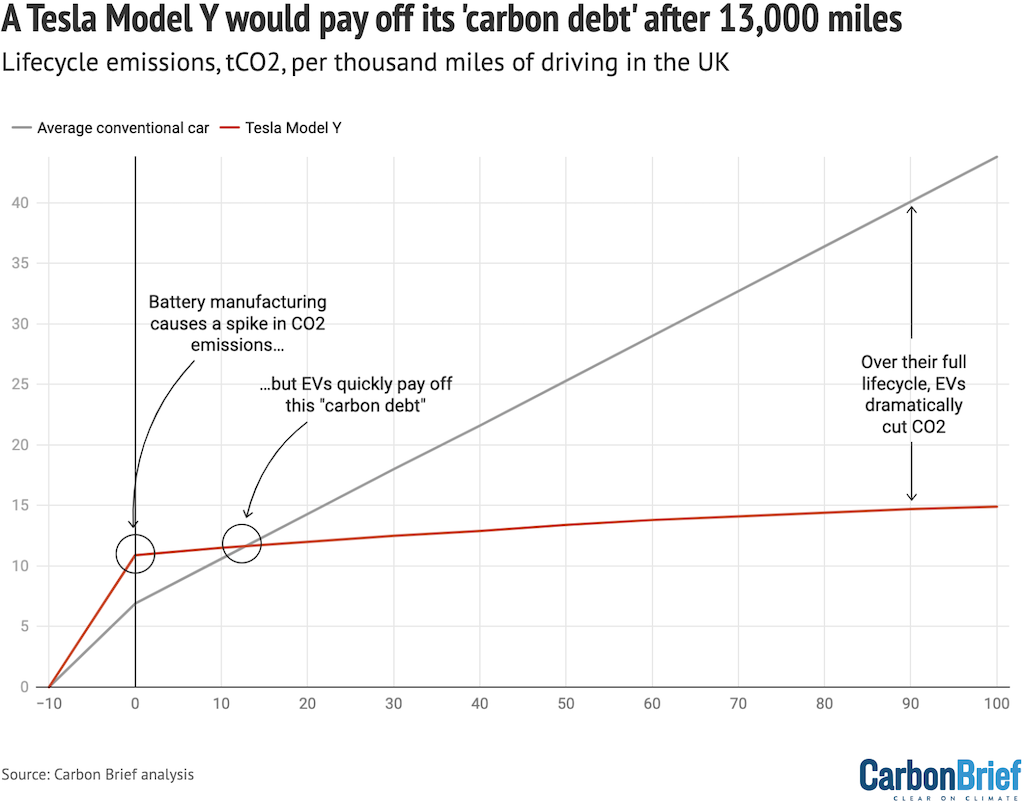
Sales of EVs
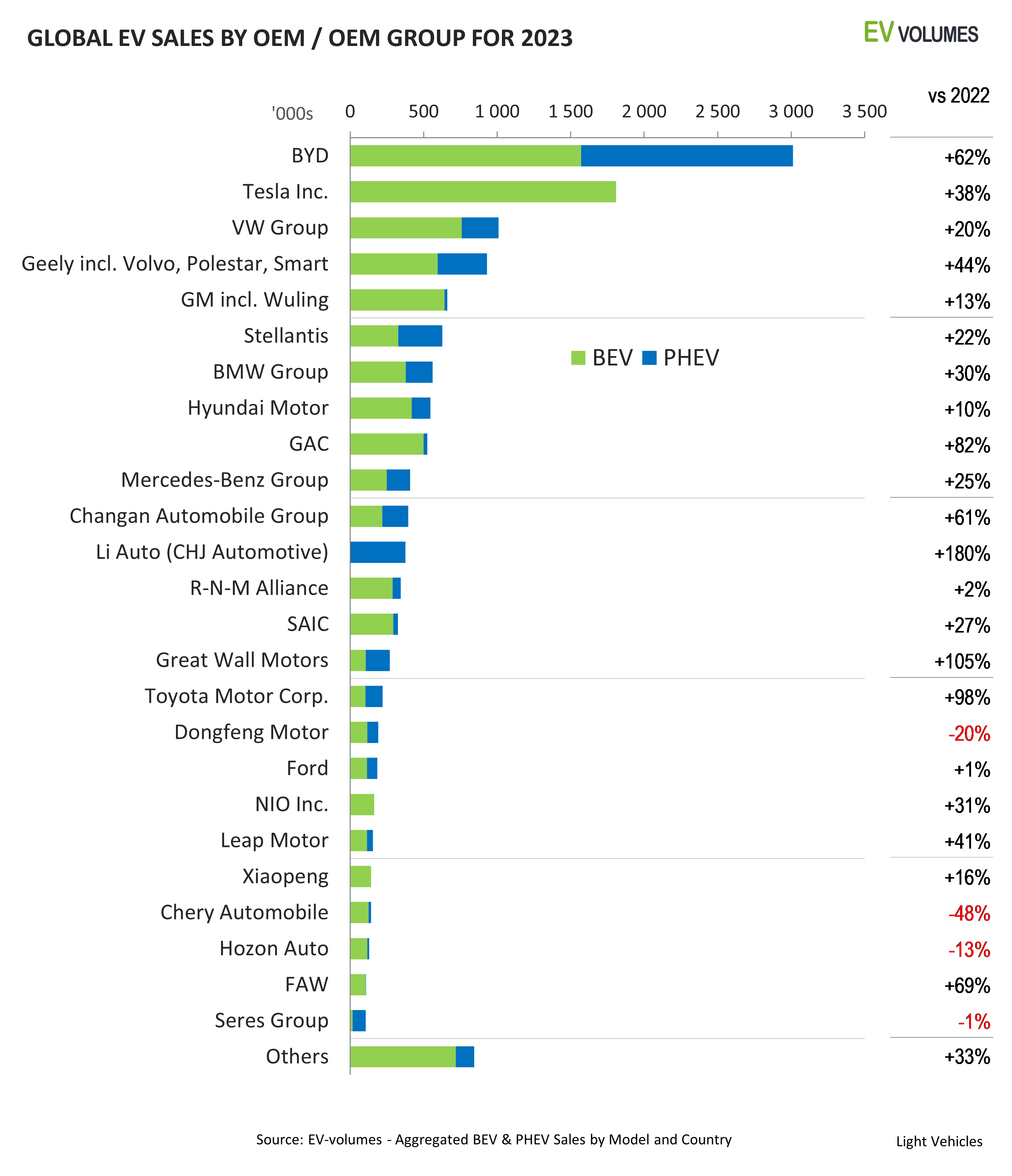
Some of the North American vehicle manufacturers are complaining that they are not meeting their goals for EV vehicle sales, but they also lack the experience that Korean carmakers Hyundai and Kia have and of course Tesla have wracked up.
Despite what you may have heard sales of EVs were up 50% in 2023 with one million EVs sold in the US and Canada. In addition, 1.6 million plug-in hybrids were sold in the same year despite a constrained supply, especially from carmakers like Toyota. There is a one-year wait time for Prius and RAV4 Primes.
Sales of EVs have slipped in early 2024 but analysts are not sure if that is because of interest rates, supply issues or possibly even the Chevy Bolt being discontinued. The Bolt was the second top-selling EV in Canada in 2023. We will learn more over time.
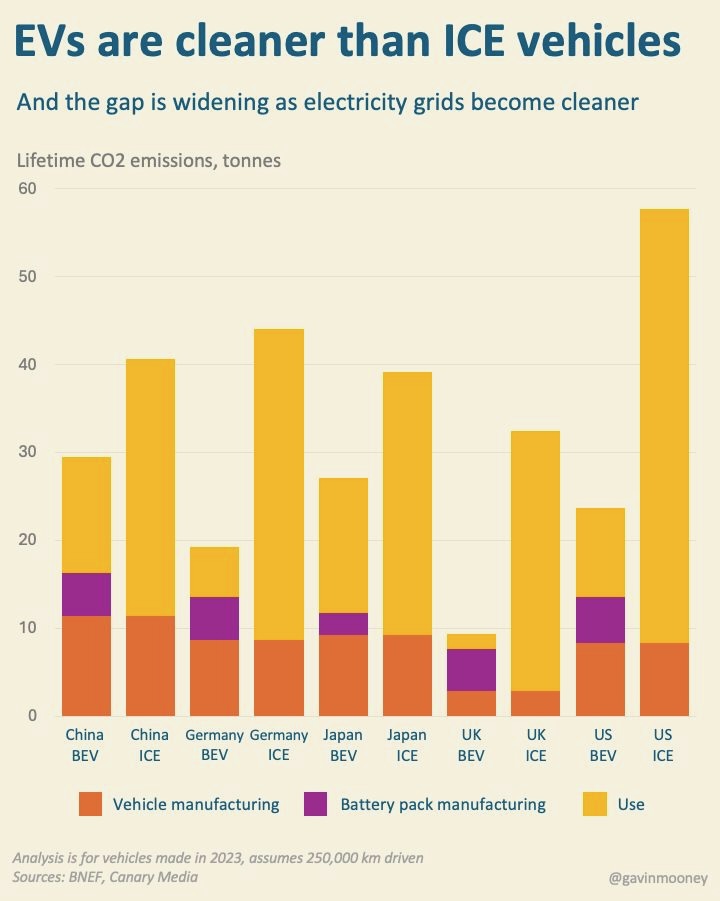
Tesla still leader of the pack, but BYD is bearing down
The best-selling EV brand in the world was Tesla in 2023 led by its Models Y and 3 cars, says EVvolumes.com which is now part of J.D. Power.
The second top-selling brand may be new to you. It’s BYD (which stands for Build Your Dreams) a Chinese EV manufacturer that sold 3 million EVs and plug-in hybrids in 2023. VW placed third in global EV sales.
In Canada, the best-selling EVs in 2023 were the Tesla Model 3, Chevrolet Bolt and Hyundai Kona.
As for the bottom line on slowing sales: “After a record year in 2023, EV sales are expected to set another record in 2024,” says an article published by NPR. The article quotes the Stephen Scherr, the CEO of Hertz, who is downsizing their EV rental fleet as saying the company “may have been ahead of ourselves” in how quickly it moved toward EVs — but maintains it’s the right long-term plan. Ford and GM are shifting their timelines, not their targets. And Tesla, of course, remains all in on EVs.”
